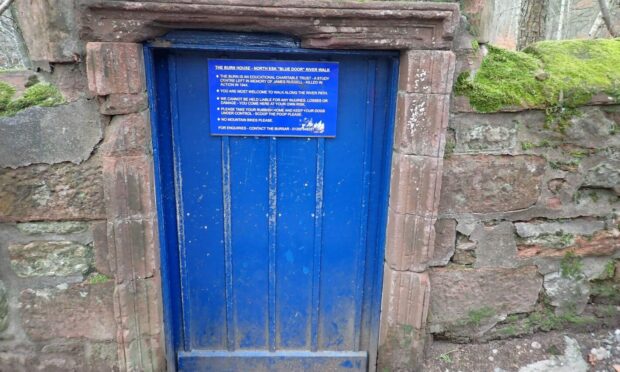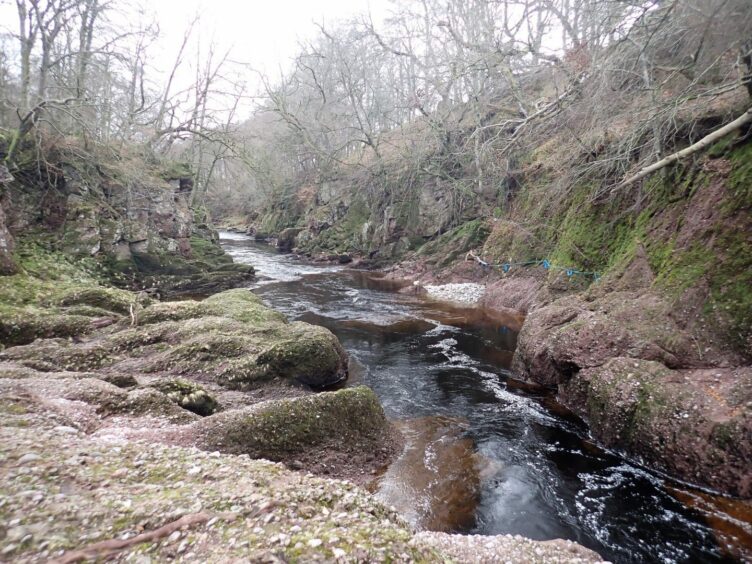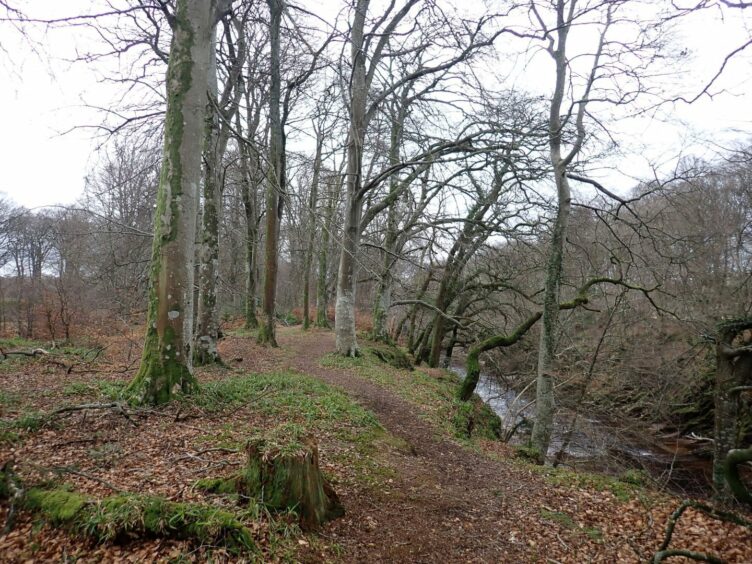The blue door was an enticement, a beckoning call to open and explore as if acting as an entrance to a different world.
I gently pushed the door open, leaving behind the road and becoming immersed in the turbulent splendour of the river gorge of the North Esk.
Situated near Edzell, this popular walk has a tranquillity that always inspires.
Coppery water
On peering down a steep slope towards the gushing river, the deep, coppery hue of the water was most striking, like swirling amber whisky that had been drawn from the depths of the earth.
A dipper whirred upriver on brown-flashed wings, spiralling over a rock shelf before disappearing.
Beech trees towered above the main path, the pale smooth bark of their trunks catching the soft luminescence of the afternoon sun.
Gilbert White, the pioneering 18th Century nature diarist, described the beech as ‘the most lovely of all forest trees, whether we consider its smooth rind or bark, its glossy foliage, or graceful pendulous boughs”.
Feminine elegance
Naturalist Richard Mabey in Flora Britannica noted that the beech has something of a feminine image – an example of elegance that acted as a foil to the rugged masculinity of the oak.
As I ran my hand down the smooth bark of one beech, I understood what he meant, for the beech is polished perfection, genteel yet with an inner strength.
The roots of beech spread laterally just below the soil surface, rendering the trees vulnerable to gales, and several along the path had tumbled from recent storms.
Their demise is part and parcel of nature, the rotting wood providing a place for fungi and invertebrates to thrive, and the sun-cascaded openings created in the high canopy benefiting plants on the woodland floor.
A feathered visitor
A treecreeper spiralled its way up the trunk of a beech ahead of me, its long, curved bill probing every nook and cranny for small invertebrates.
It climbed half-way up, and then fluttered down to the base of an adjacent beech to start the process all over again.
The smooth bark of beeches must make them less productive places to forage compared with gnarled oaks and their abundance of insect-sheltering crevices.
Yet, the treecreeper seemed content with its pickings, especially in areas where moss had accumulated.
I wandered down a small side path that led to a broad rock shelf above a narrow channel hewn in the rock by the river.
In a dark recess, mysterious liverworts clung to a rock face like ancient relics from the past.
Liverworts
Liverworts are small flowerless plants with leaf-like lobes. Instead of flowers and seeds, they produce spores and most likely have evolved from green algae and comprise the earliest lineage of plants.
On my return journey, a party of long-tailed tits bounded through the trees, restless birds that are forever on the move.
Soon I reached the blue door once more, pulled it open and departed from the wild allure of the tumble-watered gorge and slipped back into the hectic world of humanity.




Conversation